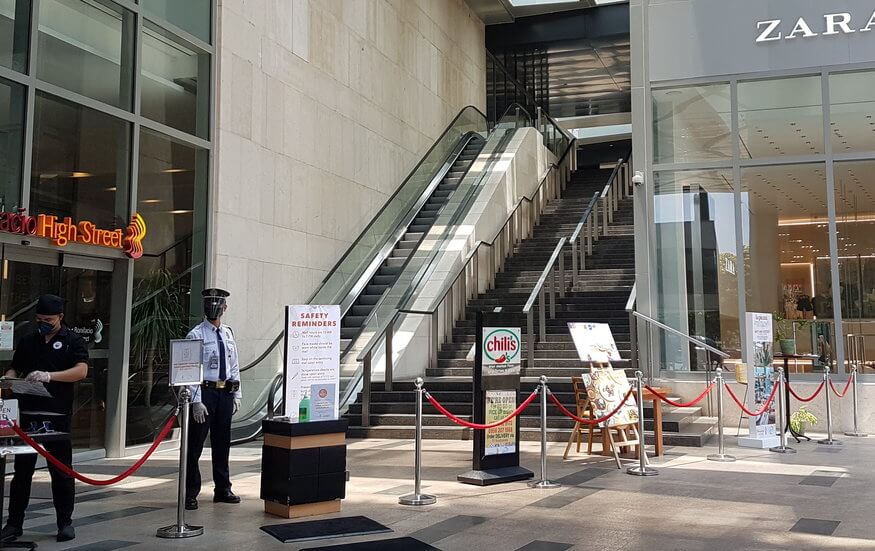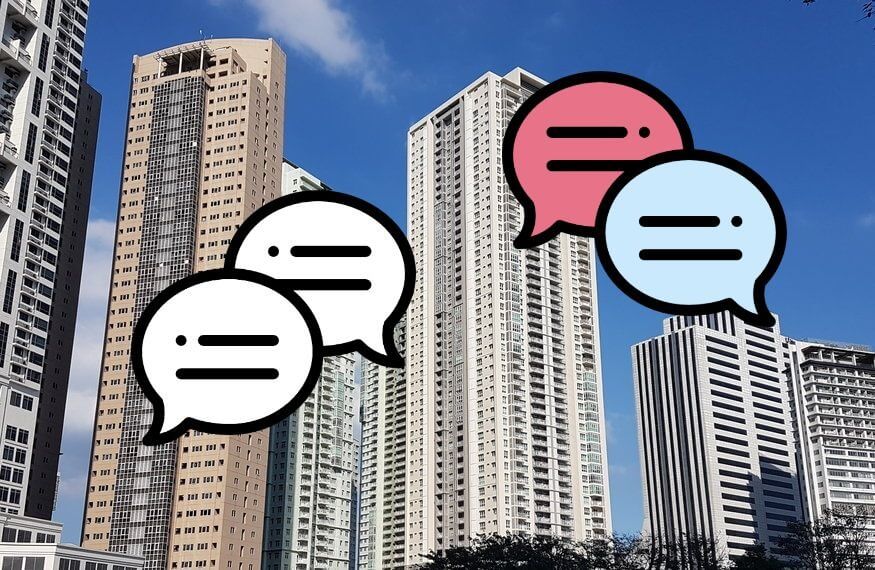As May 15, 2020 approaches, it seems likely that the Enhanced Community Quarantine (ECQ) will, sadly, be extended in Taguig City, where Bonifacio Global City is located, albeit with minor modification (now called Modified ECQ). The less restrictive General Community Quarantine (GCQ) will have to wait, let alone the return to previous normalcy.
The curtailment of personal freedom under ECQ is painful, but in the face of the situation here in the Philippines, many feel that extending the ECQ is necessary.
There are a few countries/territories where a more targeted approach has worked well without imposing extended lockdown on its residents. South Korean, New Zealand, Taiwan, Iceland, Singapore, and Hong Kong. These places have efficient public service and resources. Lockdown is used sparingly, as “a circuit-breaker” in the words of the Singaporean authorities. Of course, all of them mandate hand-washing, social distancing, and in most cases, the wearing of masks by its citizens as well.
These countries focus their effort on testing and contact tracing of infected individuals. It means in a lot of cases, even people who do not have any COVID-19 symptoms are tested. The main advantage of this targeted approach is that it allows the authorities to drastically slow down the spread the virus, while minimizing the impact on the economy and mental health of the whole population.
Experts are now saying that if we are to get a handle on COVID-19 and have the confidence to come out of a lockdown, we must have good testing in place.
In Taguig City, the first COVID-19 test center opened was St Luke’s Medical Center BGC. At first, only the collection of samples took place at the hospital. The COVID test samples had to be sent to Research Institute for Tropical Medicine in Alabang for analysis. In April, St Luke’s laboratory was accredited to do the sample analysis as well.
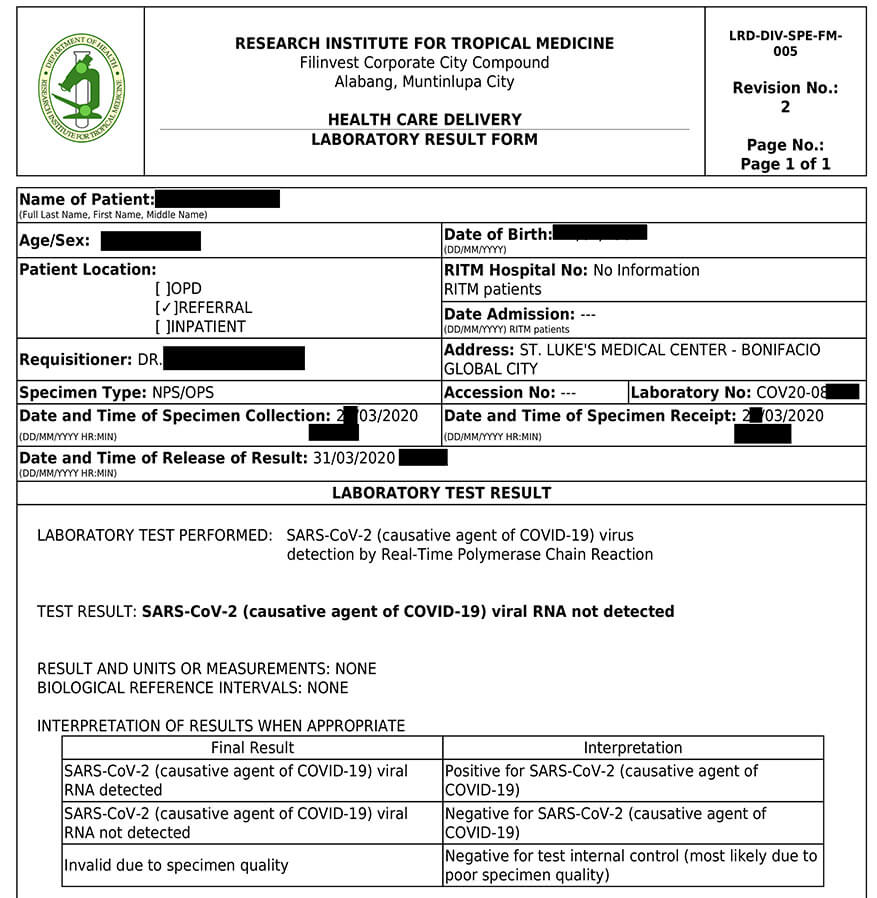
Above: COVID test result from a St. Luke’s BGC walk-in patient tested in mid March. Test result was available 4 days later, and was negative. Before test result was known, the patient home quarantined.
The COVID test done involves taking two swabs, one from the nose and the other from the mouth.
Another place to get tested is through the SMART Testing facility, a drive-thru COVID-19 testing center in the Bonifacio Global City (BGC) located in the parking lot outside Citibank Plaza on 34th Street. This was announced first on April 22 (see this report) and on May 4 (news report here). Anyone who wants to get tested through this can register online. After assessment, the applicant will be given an appointment to go to the center to get tested. The center does not seem to be very popular at the moment, as it was not operating during our visit on May 13.
Also opened at the same time by Taguig City is a similar testing facility at Taguig Lakeshore in Barangay Lower Bicutan.
The newest test center is at Enderun Tent, Enderun Colleges at McKinley Hill. See press report here.
Residents have reported seeing buses parked outside hotels such as Seda BGC and Ascott BGC, and speculated that those were carrying OFW returning from overseas. With the announcement of the new test center, it is likely that the hotels are chosen for their proximity to the test centers at St Luke’s and Enderun Tent.
Taguig City Hall also says that it has a COVID-19 on-call service where mobile teams of health workers will collect swabs from possible COVID-19 patients in their homes. Call their hotline at 8789-3200 or 0966-419-4510 to inquire or make an appointment for assessment.
How much testing is enough
To catch all who are infected we would need to test everyone, of course, but not many countries can do what China is doing in Wuhan.
Wuhan, the first epic center of the COVID-19 pandemic, used hard lockdown for 76 days after the situation got completely out of control and thousands died. It achieved the great success of reporting no new case for more than three weeks. However, the strict lockdown came at a very high cost, and still could not prevent the return of the virus. Now, they are doing testing on every one of the 11 million residents in a ten-day period.
If good sampling technique is used, countries like Iceland believes that testing 10% of the population is enough to get a good idea of where the country is with regard to the COVID-19 situation, which is important in deciding the next steps.
How far have we tested
The Philippines as of May 12 has done 172,238 tests, representing 0.16% of the total population (106.7 million), or 1.3% of the population of Metro Manila (12.9 million).
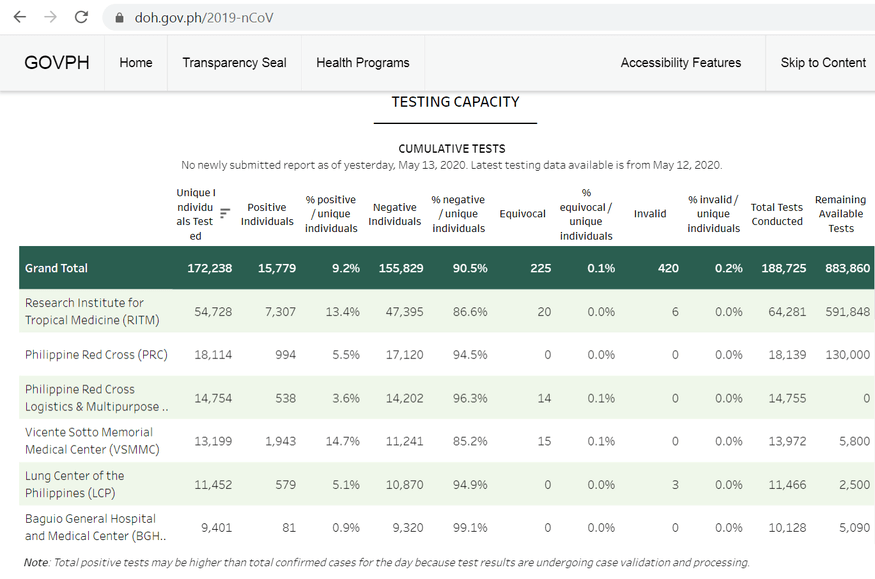
Taguig City only started announcing the number of tests done at the end of April. The number of confirmed cases was announced since early March, but this number is of very limited use, since it only includes mostly those that have shown major symptoms. A high / low number may simply mean a larger / smaller number of tests conducted. Without taking steps to identify asymptomatic cases, the authorities cannot get ahead of the virus.
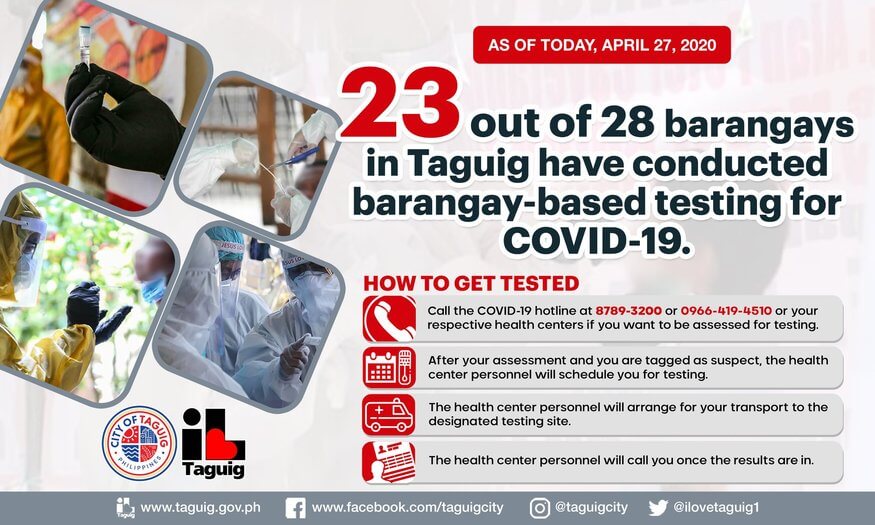
On April 27, 2020, Taguig City announced that it had tested 23 of its 28 barangays. However, the number of persons tested in each barangay, it turns out, was less than 20. Luckily, testing has ramped up since then. As of May 5, 751 persons were tested.
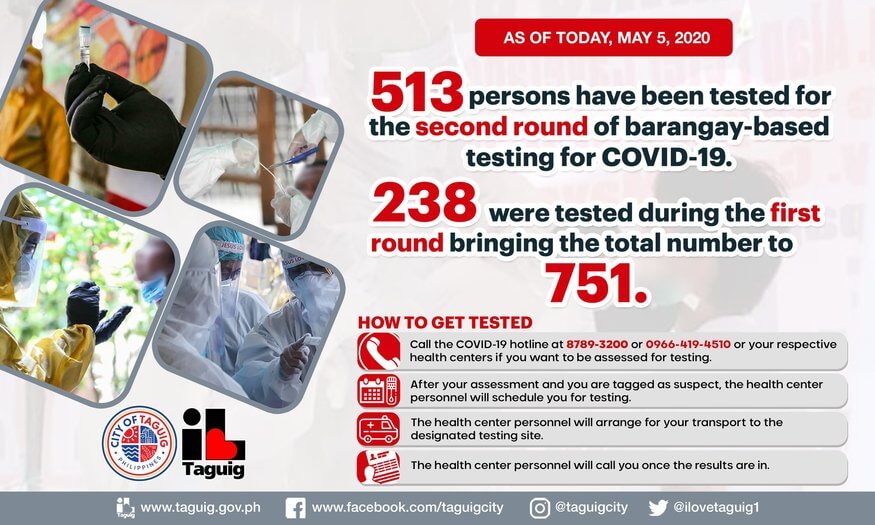
Clearly, more widespread testing is needed in Taguig and elsewhere in the Philippines. Social Distancing, handwashing, mask-wearing will be the new norm. On top of these, how soon we need to enter another Stop – Go (ECQ/ GCQ) cycle will depend on this effort. The better we do Test, Trace, Isolate and Repeat, the longer we can stay in the less restricted state of our economy.

